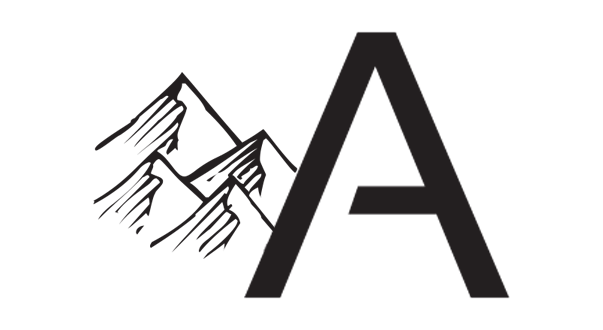Brad Post, Create the Movement, host
Gregory Kuhn, Aksala Productions, guest
Brad Post, Create the Movement, host: Welcome back to Create the Movement podcast. This is Brad Post, your host, and I’m excited to be on the phone with my friend, Greg Kuhn. Greg, how are you doing today?
with my friend, Greg Kuhn. Greg, how are you doing today?
Gregory Kuhn, Aksala Productions, guest: Good, Brad. I appreciate you having me.
Gregory Kuhn of Aksala Productions: A Video Production Company
BP: Absolutely. Greg is the owner, founder of Aksala Productions. Aksala it’s A-K-S-A-L-A Productions. Greg, glad to have you on the line.
GK: Yeah, I’m excited to be here.
BP: Greg and I have worked a few projects in the past and continued to have a relationship for a few years. I’m excited to finally get you on the podcast. I know you’ve had a pretty busy schedule lately.
GK: Yeah, it stays pretty steady.
BP: Absolutely. Well, if you could Greg, jump in. Greg’s very gifted with video production, photography. If you could, kind of share your story on how you got into this business.
GK: Yeah, man. So, I don’t want to go too far back, but when I was a kid I had the old VHS recorder. Me and my buddy would make videos, kind of play around with it. I kind of fell out of doing that in high school and I didn’t know what I wanted to do when I was in high school – as far as a profession and all that stuff.
So, I went to broadcasting school because I thought that being a DJ might be a cool thing to do. I was going to get into radio. I went to American Broadcasting School over in Del City. I worked in radio for a little bit, but it just wasn’t as exciting as I thought it was going to be.
I bounced around. I worked at a PVC-pipe factory. I worked at a local nursery here in town. One day, man, I was just like, “I’m not doing what I want to do in life.” And so, I thought, “Man, I’m going to go back to broadcasting school. I’m going to cut a demo tape and I’m going to start sending it out. I’m going to get a job in broadcasting.”
So, I went back to school. Walked in and an instructor named Ian goes, “Hey, I heard they’re hiring over at this local TV station.” I did a U-turn. Went home, got dressed, ran over to KSBI television, which was the television station which was hiring, and put in an application. They were right in the middle of a flood, so I didn’t hear back from them for a couple of weeks. And I kept kind of bugging them.
They ended up hiring me. I started pushing buttons, master control, you know? Just making sure everything was on air. Recording TV shows, all that stuff – pretty monotonous. But after about two or three months I started getting curious so I started wandering around the station. They had these cameras just laying in the corner. They weren’t using them. Like nice ones. You know? And so, I was like, “Hey, can I mess with those?” And they’re like, “Sure.”
I started taking them home with me on the weekends and just trying to figure them out. I was making public service announcements with my kids. My daughter was little-bitty at the time, so I was making ‘Don’t Drink and Drive’ PSAs – just whatever I could make up. I started figuring things out. Didn’t know what I was doing so I’d just ask people questions and they’d give me tips and hints. I just kind of stumbled around until I started figuring it out. Then they showed me how to get it on the computer and I started editing. I just kind of lived up at the TV station for a long time.
One of my good friends, we started selling spots. He was the salesman. He was like, “Hey, you want to go shoot a commercial?” And I was like, “Okay!” So, we went out and started shooting commercials and I moved my way into video production at the TV station. They built a studio and we started doing live event stuff. We were doing stuff with OU and OSU coaches’ shows. I just started learning a ton about video production and really enjoyed it. Had a lot of freedom to be creative and spend a lot of time doing it.
That’s what really led me into video production – getting hired at the TV station and them just giving me the freedom to explore and learn. Just fell in love with it, man. Really enjoyed it.
BP: That’s exciting. If you could, tell me how you made the transition out, or when you started Aksala Productions? What was in your insides that you were like, “Man, I need to do this on my own.”
GK: I think there’s something in every video guy, if it hasn’t hit you yet and you’re a video guy – it will, at some point in time you think, “I want to do this on my own. I want to be more in charge of the production.” Right?
If there’s somebody over you you always feel like your creativity is hampered a little bit. You know? Even if it’s not, you kind of have that gut feeling.
TV just was overwhelming. I had my third daughter. It was 24-7. The bad thing about TV is you just churn stuff out. Right? It caps your creativity at a certain point. So, by the grace of God, I got out of that and I got hired on at a local non-profit organization over in Bethany. And that really gave me the time to get better at lighting and sound and editing, motion graphics, and that sort of thing. Gave me some breathing room to just refine my abilities a little bit better.
Really loved it over there. Was a great experience. But they started making some structural changes and I could kind of see the writing on the wall. That my position might be phased out or changed in some way. So, I thought, I’m just going to do video production on the side. Just in case kind of thing. A fail-safe. That way if something happened I wouldn’t be out completely.
Jump back a little bit. A few years before this I got overweight and I was trying to lose weight. So, I’m trying to get into jogging. And I was jogging on the treadmill, and I was in front of a mirror, and I had a shirt that said ‘Alaska’ on it. On the mirror it said ‘Aksala.’ I was just thinking if I ever have a video production company I’m going to name it Aksala Productions.
BP: Okay, I see that.
GK: That was probably two years before I started Aksala. But I didn’t want to go with a techie-sounding name. I kind of wanted it to be a little more organic or earthy feeling. You know? And Alaska has always been that final frontier. You know? Rugged kind of place in my mind. So, that’s where Aksala Productions came from.
BP: I like it.
GK: That’s kind of how I grew into it. I stayed at the non-profit a lot longer than I thought I would. I was there about three or four years before they made that transition and that’s when I went full-time with Aksala Productions. That was my transition through that.
In the meantime, I directed the Oklahoma City Final-Cut Pro Users Group for several years. And just tried to build a network of people I knew in the video community. And that was really beneficial when I went out on my own because I already knew a lot of people in town. So I could get my name out real quick, let them know I was available for work and that sort of thing.
BP: How long have you guys been fully out on your own?
GK: Way longer than I ever planned on being. Coming up on five years. I never drew up like, “I want to have my own business.” You know? I didn’t have that kind of dream, I guess, growing up. It just kind of happened to me. And so, it took me probably two or three years before I really embraced, “Hey, I’m self-employed. I’m in business on my own now.”
It’s been good, man.
BP: Five years, congrats. That’s awesome.
GK: There’s difficulties no matter what you do. You know? It’s been good. I’ve really enjoyed it. I’m very thankful that I was kind of pushed into this experience. Because it’s really helped me work with a lot of different people. It’s helped me push my creative and personal skills quite a bit. You know? Overall, it’s been a good thing for us.
BP: And you’re based out of the Oklahoma City area, but you’ve traveled quite a bit, too? Right?
GK: I do quite a bit of traveling. I do live event production with guys out of Knoxville, and so we travel quite a bit with them. In fact, I’ll leave for Atlanta Sunday. Just got back from Springfield. So, we travel quite a bit for that. Wherever I pick up a client. I’ve got a client in Utah. I’ve got a client in Washington, DC that I go see probably once a year. Just various places.
Greg’s Ideal Client
BP: If you could, Greg, kind of explain to our audience what an ideal client looks like for you. You said you’re doing a lot of events. Tells us kind of what your ideal client looks like.
GK: One thing I love about video editing and just the work that I do is that you never know what’s coming up next. You never know who’s going to want you to go film something on some location you’ve never been. Or, some weird or odd kind of – you filming at a gun range one day and you’re filming in an office building the next.
I’ve always really enjoyed the variety of work. You’re always able to push yourself and get a little bit better and more creative and that sort of thing.
An ideal client – it’s great when you can get a client that wants to consistently use you all the time. You can get a retainer situation going, that’s ultimately ideal in my opinion. Just a client that you’re not going to do a one-job and then done. It’s nice when you can become their video guy. And sometimes you get clients that you can actually use their services. That can be extremely beneficial for you as well.
You can build that relationship and over time you kind of get to know what they’re looking for. I feel like I can better serve them sometimes if I have a relationship that’s built over years and multiple projects and that sort of thing.
And the financial side’s nice, too. When you know you’ve got a client that keeps coming back is going to keep giving you projects to work on. That’s good, too. I really like the ones that have multiple projects over time.
BP: Perfect. This is kind of a side-off question, but I know you can probably answer it pretty quickly, or not quickly but explain it well. Could you tell us a little bit, Greg, about the process that you go through when a new client looks to engage you on, let’s say a specific video?
GK: Yeah. So, it’s a little different. Everybody’s at a different stage in development of their ideas, right? Or, their story or branding, and all that kind of thing. So, it really depends on if they’ve got an established brand coming into you. Needing to create content designed for that feel and look.
Or, if they’re building their brand and they want you to help develop that as you go.
So, it depends a little bit, I guess you kind of start with whatever idea they bring to you. And you just start brainstorming. You find whatever angle you want to take on it. Do we need to film at a location? Do we need to film inside, or is it outdoors? What’s the end project going to be? Is there motion graphics? And then you have to decide, “Can I do all of this on my own? Do I need to bring in extra help?” Budgets and all that kind of stuff.
I’ve found that most projects, not to oversimplify it, but you’ve got: time, budget and ability. Those are three things you’re kind of juggling. It’s nice if you have a huge amount of all. If you don’t have a lot of time, usually your budget and your ability come into play a little bit heavier. If you’ve got good ability and time’s not an issue, and budget’s not an issue, you kind of manage those three overarching areas to fit whatever the client needs.
I don’t know that I answered that perfectly well. I’m trying to get better too, Brad. This is something especially, being out on my own, I’ve tried to develop more. I’m trying to get more proactive in pitching ideas to my clients.
Over the past few years, I’ve kind of just been in management mode where they come to me with an idea and I try to help them develop that and complete that. But I’m trying to get better about actually having more creativity on my own and pitching those to clients and trying to get them to bite on things that I would like to see them do. If that makes sense. Trying to work in that direction.
BP: Normally, this is kind of what you did with us, you would take that client, or that agency, through somewhat of a questionnaire form just to see where they’re at in the project. Right?
GK: Right.
BP: And then, based on the answers to your questions, that’s when you look to time, budget and ability.
GK: Yeah. When do they need the project done? How much money do they have? I used to always complain when I’d ask people for help with something, they’d be like, “Well, what’s your budget?” Got to know the budget. What you’re willing to spend. Then it just comes down to my personal ability or people that we can hire, and that sort of thing, to be able to manage all of that.
I’ve found that most people, I can usually manage those things pretty well for people and come out with something that really fits what they’re needing on the video-side of things.
BP: Perfect. I like it. One thing you’ve, not recently, started expanding into not just video but also photography. I saw some of your work which is outstanding. But, if you could, kind of tell me a little bit about what is exciting to you in your industry right now?
GK: I’ve tried to step into photography. I’ve always taken pictures and there’s a lot of overlap between video and photography. But I’m trying to move into that photography space a little bit more. Get more professional with my look and that sort of thing. But that’s been a challenge, but it’s been fun.
I think that most exciting thing about the industry that I’m in, and this is probably nothing new really, but it seems new. I used to film analog, on tape, that sort of thing. So, I’ve been in through the digital transition. And since the DSLR and the digital transition happened technology is just screaming, man. There’s all these different programs to do all these different specific things. There’s all these different cameras, there’s lenses, grip, there’s so much being developed all of the time it’s hard to keep up with.
But the upside to that is there’s always something new to learn. There’s always some gadget you come across and you’re like, “Oh, man, I could use that.” You’ve got drones now. That’s made a huge difference in our industry. Even within the drone world, there’s some new technology out there, or there’s some new drone.
In one sense you always feel like you’re behind the curve because as soon as you buy something, down the road, six months later, something better’s me out. But it’s exciting to be doing what I’m doing. And I think another thing I like about where I happen to be in my personal career is that I’ve been doing this for pushing 20 years now. So I’ve got enough experience behind me that I can get a hold of that new technology and implement into a system that I’ve already developed, pretty well. If that makes sense.
It would be exciting, I guess, to be starting out now. But I’m glad that I was able to start in the analog period and grow through this digital age. Just because I think it’s given me pretty good perspective over the years on how to manage my time, manage projects, and just develop systems that I can be really efficient and proficient in what I do.
Greg’s Advice: Take Risks
BP: Absolutely. Awesome Greg. Is there anything else you’d want to add? Or, anything I didn’t ask you that you’d want to share with our audience?
GK: I would encourage people to don’t stress out too hard on taking a chance. It always seemed to me, I always feel like I’m taking risks when I go into new ventures or I pick up new clients and that sort of thing. I would just encourage everybody to, if it’s something that you’ve got that’s kind of down in you a little bit, you don’t have to jump off. You don’t have to dive into it all the way. But it’s really good how it came for me. I just started on the side and then opportunity came for me to move into full-time doing what I’m doing.
If you have that somewhere in you just kind of start leaning that way. Start moving that direction. Who knows what will come out?
BP: That’s good.
GK: Take those risks. It’s healthy to have a little bit of risk in life.
BP: I agree. That’s great. How can our audience get a hold of you? Obviously, we’ll put your website aksalaproductions.com in the show notes. What are other ways people can get in touch with you?
GK: You can call me: 405-312-0358. Aksalaproductions.com. It’s ‘Alaska’ backward. A-K-S-A-L-A Productions. My email is aksalaproductions@me.com. So, those three ways are pretty good ways to get a hold of me.
BP: Awesome. Greg, thanks again for being on the Create the Movement podcast.
GK: Yeah, Brad. I really appreciate it, man. It was a lot of fun.
BP: Thanks for listening and stay tuned for our next episode.











